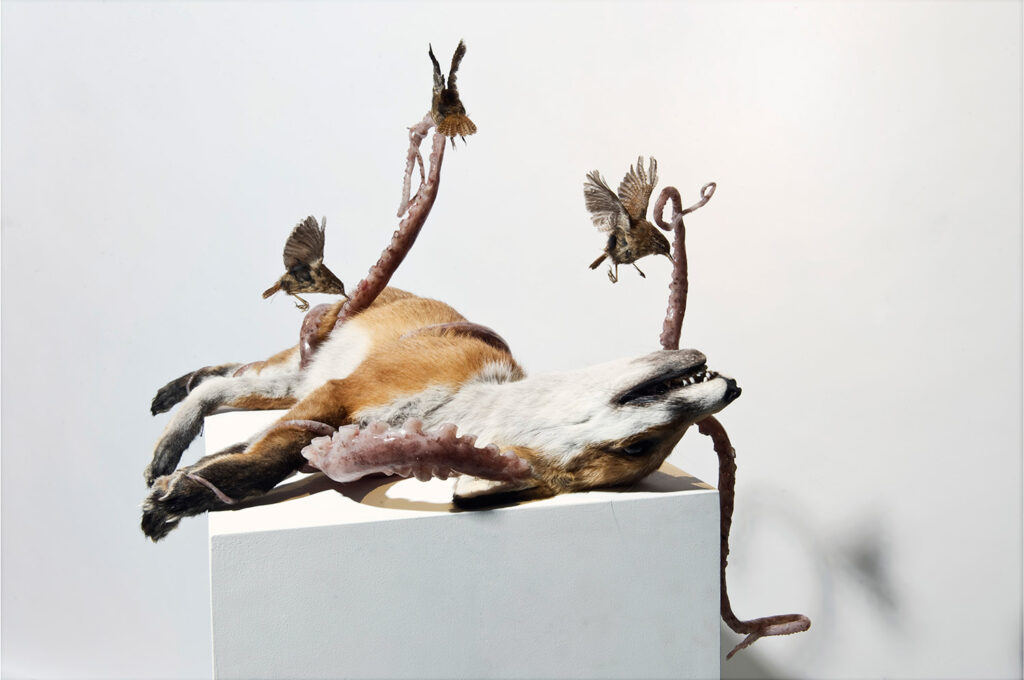Taxidermy, traditionally viewed as a means of preserving animal specimens for scientific study or trophy display, has evolved into a form of art that transcends its utilitarian origins. Today, taxidermy is celebrated as a medium for artistic expression, with skilled practitioners pushing the boundaries of the craft to create stunning and thought-provoking works of art. In this article, we will explore the world of taxidermy as art and highlight some notable taxidermists and their innovative works.
The Intersection of Science and Art
At its core, taxidermy is a blend of science and art, requiring a deep understanding of anatomy, biology, and preservation techniques, as well as artistic skill and creativity. While traditional taxidermy focuses on creating lifelike mounts for scientific or display purposes, contemporary taxidermists are using the medium to explore themes of nature, mortality, and the human-animal relationship.
Notable Taxidermists and Their Works
- Walter Potter: One of the most famous taxidermists of the Victorian era, Walter Potter is best known for his whimsical and anthropomorphic tableaux featuring stuffed animals dressed and posed in human-like scenarios. His works, which include scenes such as “The Kittens’ Wedding” and “The Guinea Pig School,” are both charming and macabre, blurring the lines between reality and fantasy.
- Carl Akeley: Widely regarded as the father of modern taxidermy, Carl Akeley revolutionized the craft with his innovative techniques and lifelike mounts. Akeley’s contributions to taxidermy include the development of the “Akeley method,” which involves sculpting anatomically accurate forms to create lifelike mounts that capture the essence of the animal in its natural habitat.
- Robert Marbury: A contemporary taxidermist known for his unconventional and avant-garde approach to the craft, Robert Marbury explores themes of beauty, decay, and transformation in his work. Marbury’s creations, which include hybrid creatures and surrealistic sculptures, challenge traditional notions of taxidermy and invite viewers to question their perceptions of nature and mortality.

- Hilary Berseth: Combining taxidermy with sculpture and installation art, Hilary Berseth creates immersive environments that blur the boundaries between the natural and the artificial. Berseth’s works often feature organic materials such as plants and insects alongside taxidermy specimens, creating haunting and otherworldly landscapes that evoke themes of life, death, and regeneration.
- Tessa Farmer: Known for her intricate and ethereal fairy sculptures made from preserved insect specimens, Tessa Farmer explores the delicate balance between humans and the natural world. Farmer’s works, which depict tiny skeletal fairies riding insects or battling with tiny weapons made from organic materials, are both beautiful and unsettling, inviting viewers to contemplate humanity’s impact on the environment.
Challenges and Controversies
While taxidermy as art has gained recognition and acclaim in recent years, it is not without its challenges and controversies. Some critics argue that taxidermy perpetuates a culture of trophy hunting and exploitation of animals, while others question the ethics of using animal remains as artistic materials. Additionally, the process of obtaining and preserving animal specimens for taxidermy can raise ethical and environmental concerns, particularly for endangered or protected species.
Despite these challenges, taxidermy continues to captivate and inspire artists and audiences alike with its unique blend of science, art, and storytelling. Whether it’s through traditional mounts, avant-garde sculptures, or immersive installations, taxidermy as art offers a powerful means of exploring our relationship with the natural world and challenging our perceptions of life, death, and beauty. As the craft continues to evolve and push boundaries, it will undoubtedly remain a vibrant and thought-provoking medium for artistic expression for generations to come.
